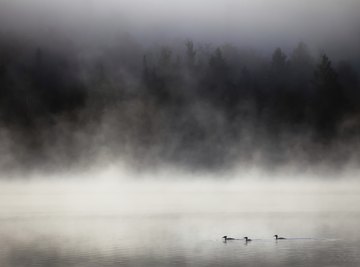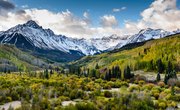
Up in the sky, clouds form intriguing shapes that block the sun and sometimes bring rain, but when they form near the ground as fog, they can also limit visibility and create hazards. Fog forms in different ways, and it does so because the air has become saturated with moisture.
Radiation Fog
The Earth's surface absorbs heat from the sun during the day, and at night it radiates that heat back into space. If there is enough moisture in the air close to the ground, it condenses to form fog as the ground cools. This typically happens when nights are cool, clear and long -- particularly in late autumn.
Advection Fog
People living on the West Coast of North America are familiar with the fog banks that blow in from the Pacific Ocean. They form as warm air blows over the colder surface of the ocean, and the change in temperature causes the moisture in the warm air to condense. Advection fog always has a horizontal movement.
Other Types of Fog
The fog on mountain slopes is called upslope fog, and it forms as moist air reaches the colder temperatures of the higher altitudes, and the moisture condenses. In temperatures below minus 10 degrees Celsius (14 degrees Fahrenheit), fog consisting entirely of ice crystals can form. On these cold days, evaporation fog can form over warm bodies of water. It occurs because the warm air close to the water condenses when it mixes with the colder ambient air.
About the Author
Chris Deziel holds a Bachelor's degree in physics and a Master's degree in Humanities, He has taught science, math and English at the university level, both in his native Canada and in Japan. He began writing online in 2010, offering information in scientific, cultural and practical topics. His writing covers science, math and home improvement and design, as well as religion and the oriental healing arts.
Photo Credits
Igor Kovalenko/iStock/Getty Images
